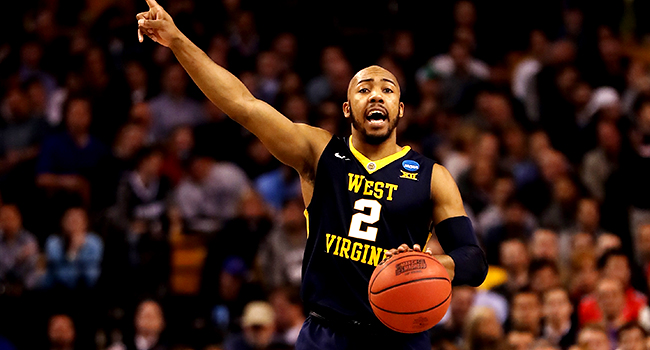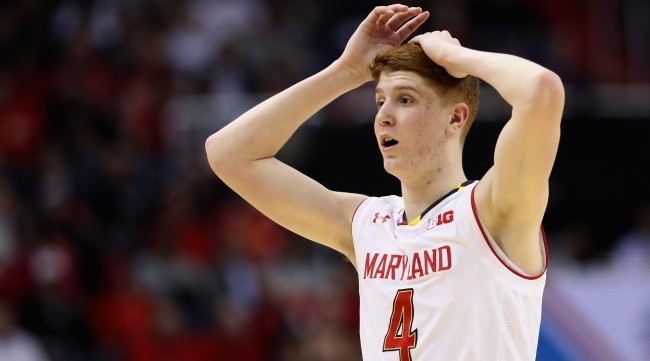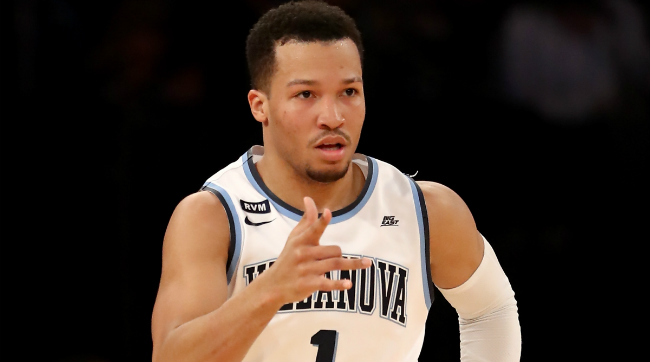
With the NBA Draft Combine rolling along and plenty of attention being paid to the top prospects available, it is easy to overlook players that project to land comfortably outside the top-20 overall picks. Those prospects can exist in a variety of ways, ranging from high-floor, proven college veterans to high-ceiling, risky athletes will all kinds of potential and plenty of downside. However, teams can extract all kinds of value if they are able to unearth talent between picks 20 and 40. Today, our mission at this (very) early stage is to point to a few potential diamonds in the rough.
From a criteria perspective, players include below are widely projected in the second round, even with full knowledge that a few of them could pop into the top 30 picks if a team falls in love. Famously, it only takes one front office to change a calculus on a player but, in the same breath, it is instructive to work from a consensus at this point. These players might be viewed as second rounders, but don’t be surprised if they end up sticking around and having productive NBA careers.
Jevon Carter – PG, West Virginia
Carter will be 23 years old when his first professional season starts and that is sure to scare some NBA teams (and online scouts) away from him as a prospect. That, however, would be a mistake.
His physical limitations are legitimate, as Carter measured a shade under 6’2 at the combine with only average athleticism. Still, he is an utterly terrifying defensive prospect, as the West Virginia standout is the best on-ball defender in this entire class. It is fair to point out that Carter may be a specialist at the NBA level and that means a bench role in most places, although he did hit 39.3 percent of his threes and 85.8 percent of his free throws as a senior.
Regardless, Carter would be a great sidekick to a primary offensive initiator on the wing and his mentality is infectious in the best possible way.

Kevin Huerter – SG/SF, Maryland
Huerter isn’t a household name but, after a fantastic combine, he is certainly on the radar for teams and scouts at this stage. At 6’7, he possesses all kinds of shot-making potential and, even without impressive length (6’7 wingspan), Huerter has displayed the ability to get his shot off in a variety of circumstances.
Beyond that, he simply knows how to play and it will be interesting to see how he develops defensively, especially from a perspective of strength. It would be easy to argue that he’s the least-likely player on this list to skyrocket into the top 30 but, in a league that needs shooting in the worst way, Huerter could be an effective role player for a long time.
Justin Jackson – PF/SF, Maryland
Jackson had a brutal college season and there are questions regarding whether he even made the right decision to declare for the draft with an agent. If we acknowledge the risks (especially with injury issues this year), Jackson’s raw tools are tantalizing and the theory of what he can be would be quite interesting.
He measured at 6’7 with a 7’3 wingspan at the combine, providing a projectable frame for what his ultimate destiny might be. Jackson is going to have to make shots from the perimeter in order to reach his ceiling but a long, switchable defender that can play all over the floor certainly sounds like a player that NBA teams are looking for right now. He might be that.
Omari Spellman – C/PF, Villanova
If Spellman’s defensive profile even approached what he can do offensively, he’d be a lottery pick. The national title-winning big man can really shoot it from deep despite possessing center size (6’9 with a 7’2 wingspan). He is capable of holding his own with the ball in hands at multiple levels on the floor. There is also no question about his future ability on the interior, with reasonable rebounding numbers and the ability to grow.
On the flip side, he is a highly questionable defensive prospect who displayed very little, even at the age of 20 playing in a high-level college system under Jay Wright. Spellman might have to be an offense-only specialist and, because that player exists in the NBA, there is a path to a lengthy career that way. If he can become passable defensively, though, there is a chance he could be a low-level starter (or better), making him a steal for whoever drafts him in the second round.

Any Of These Guards
Because the draft is an inexact science, it is tough to comfortably project which players will actually slip into the second round. With that said, this is a class overflowing with quality perimeter prospects, especially when attempting to unearth high-end backups in the future. Here are a few (reasonable) names fully capable of returning incredible value in round two in the event they fall that far.
- Grayson Allen (SG, Duke) – After a lengthy career at Duke, a lot of people seemed to forget that Allen was an elite-level athlete but he reminded everyone of that at the combine. His path to an NBA career, though, centers on an impressive ability to put the ball in the basket, particularly as a three-point shooter. Allen helped himself a lot at the combine, though, so he may be gone before the second round starts.
- Jalen Brunson (PG, Villanova) – Brunson is probably the highest-rated player on this list and it would be a surprise if he dipped into the second round. Teams might sour on him based on a lack of measurables but, at worst, it feels as if Brunson profiles as a long-term backup point guard, much in the way that Frank Mason did a year ago. The only caveat there? Brunson happens to be better than Mason.
- Jacob Evans (SG/SF, Cincinnati) – Evans is an unknown to many NBA fans but he’s a tremendous 3-and-D prospect. We didn’t often see that project in his role at Cincinnati but, if he zeroes in on what he can (and ignores what he can’t) do, look out.
- Melvin Frazier (SF/SG, Tulane) – There was already plenty of late-first round buzz surrounding Frazier as a 3-and-D guy before the combine. Then, he measured at 6’6 with a near 7’2 wingspan and a 40.5-inch vertical. That profile will play up in a big way at the next level.
- Devonte Graham (PG/SG, Kansas) – It wouldn’t be a shock if Graham fell to the second round, particularly given his age (23) and lack of elite measurables. He can guard and shoot, though, which is a nice combination for a player that bounces around the league with versatility.
- Aaron Holiday (PG, UCLA) – There is a divide on Holiday, with some scouts projecting him as a top-20 guy and others seeing more of a high second-round prospect. Regardless, he helped himself with a wingspan near 6’8 at the combine and his defensive profile really pops when you consider that kind of length. Given that and his propensity to score efficiently, there is a lot to like.
- Shake Milton (SG/PG, SMU) – Milton might fall out of the top-25 … but he shouldn’t. The SMU star is 6’6 with a wingspan nearing 7’1 and he was incredibly efficient as a shooter at the college level. Milton isn’t a No. 1 offensive creator in the NBA but he brings length, shooting, defense and basketball IQ to the table. There aren’t many weaknesses here.
- Landry Shamet – Shamet’s shooting acumen will take him a long way and his stock may improve on the heels of a near 40-inch vertical at the combine. He still isn’t an elite athlete by any stretch but shotmaking, ball-handling and size are a nice combination and Shamet may be a first round pick as a result.






